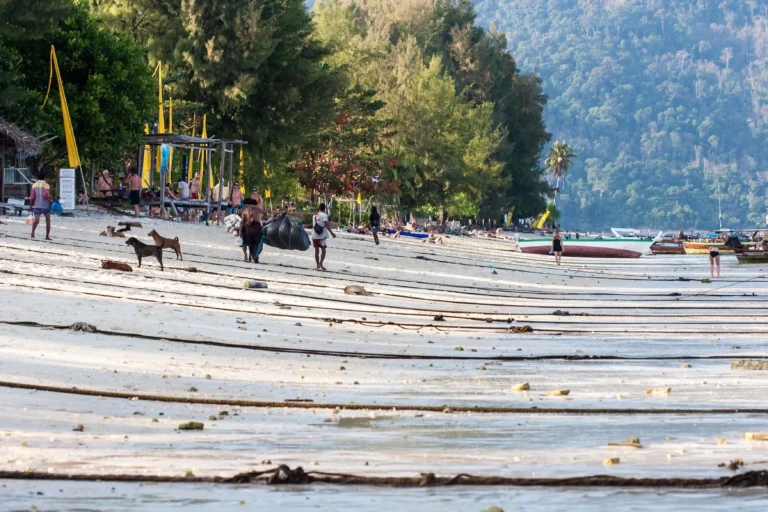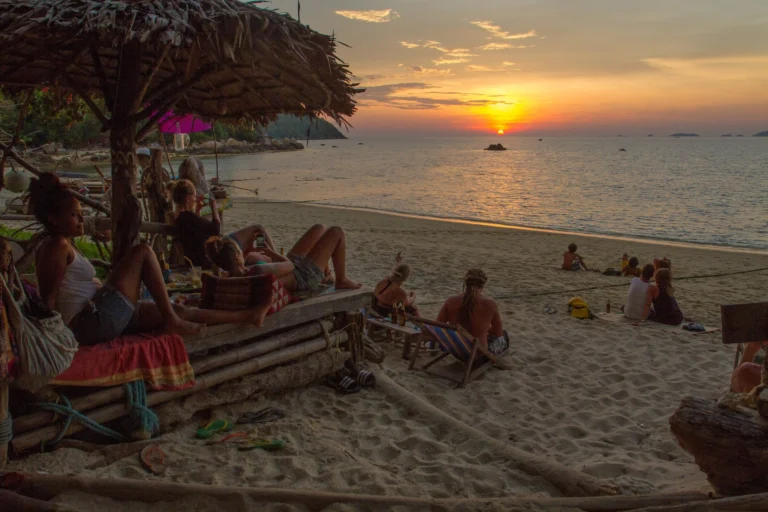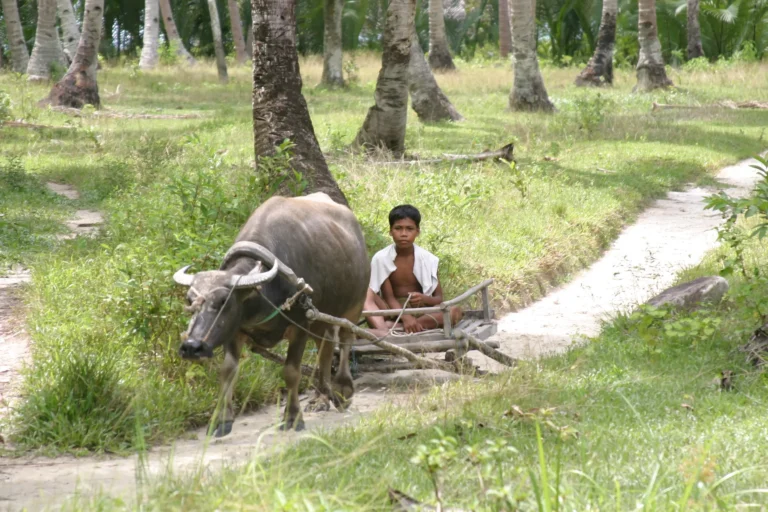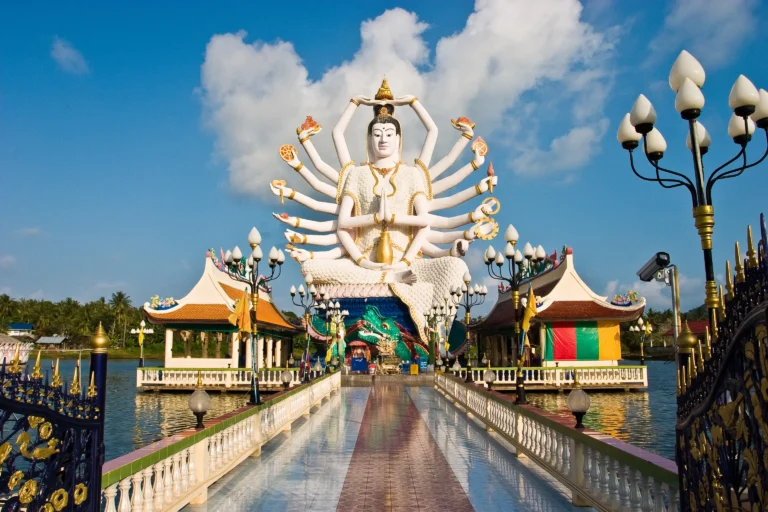We took the JR Nara line from Kyoto to Nara. It takes about 45 minutes. Nara was the first capital of Japan. It is a famous tourist destination. It has many UNESCO world heritage sites, most of which are in very compact areas. So it is possible to pack most of the must-see sights into one day. We planned to follow the suggested route from the Lonely Planet guidebook.
The walk starts near Kintetsu (one of the Japanese private railways) stations. As we were JR rail pass holders, we needed to go from JR station to Kintetsu station, about a 10-15 minute walk. Nara Koen is a pleasant park in Nara city. Near the Kintetsu station starts Nara Koen. The park is home to hundreds of freely roaming deer considered to be the messengers of the gods in Shinto. We bought some cookies for the deer at the gate (cost 150 yen).
Walking in Nara Park was very interesting; there were a lot of small temples and shrines. The first bigger stop was at Todai-Ji temple, one of Nara’s star attractions. The entrance to the temple cost 500 yen. The temple itself is magnificent—the world’s most enormous wooden building. The temple has a 15-meter-high Buddha cast in copper and coated with gold. The temple was quite packed with tourists and pupils.
We also visited Kasuga Taisha, the most celebrated shrine in Nara. Kasuga Taisha is famous for its many lanterns. There are many bronze lanterns within the shrine and hundreds of stone lanterns donated to the shrine by individuals as an expression of their faith. Each one is inscribed with the name, date, and special wish. During the lantern festivals in February and August, all the lanterns are lit.
The walk in Nara Park was nice, although the weather was scorching. After a late lunch, we returned to Kyoto, arriving at the station at 4 PM. We went to the tourist information center to obtain advice on how to get the most out of Kyoto. The lady at the counter gave us walking maps for different areas in Kyoto. As most temples and shrines close at 5 PM, she suggested starting with the Path of Philosophy in Northern Higashiyama.
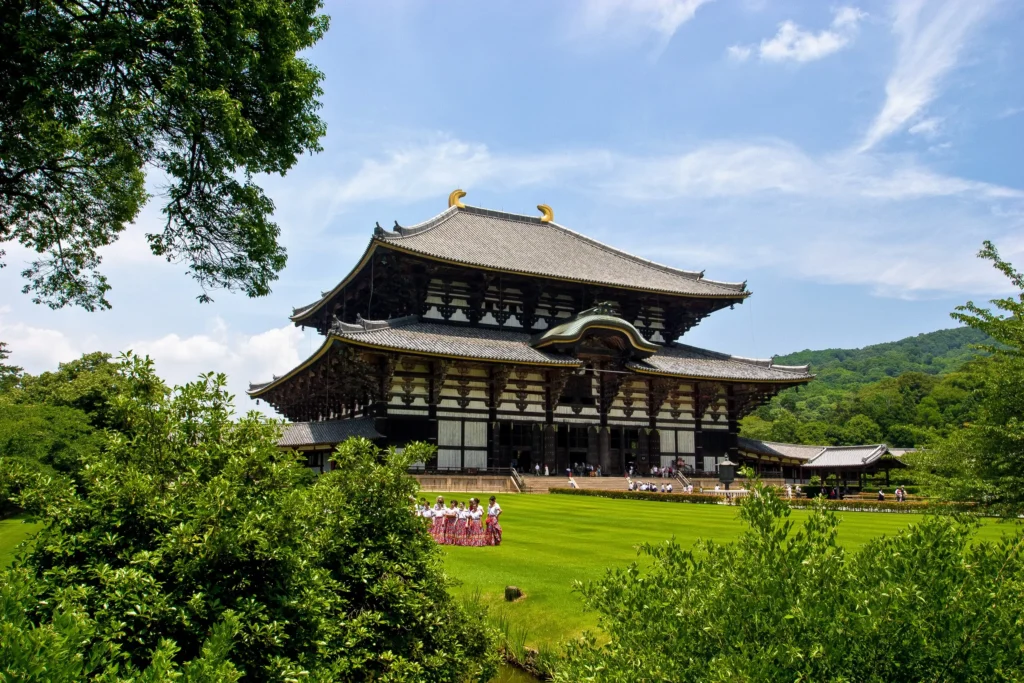
The Path (or Walk) of Philosophy is a good walk away from city noises. We can only imagine how lovely it must be during hanami (cherry blossom season). Even without cherry blossoms, the walk there was beautiful. In July, many hydrangeas blossom, and in the canal, one can see many colorful fish.
After the Path of Philosophy, we walked to Maruyama Park. It was Saturday evening, and we found the park packed with well-dressed people, lots of them wearing kimonos. Maruyama Park contains small orchards, stroll gardens, rest houses, Japanese restaurants, and much more. It is the perfect place to sit for a rest after a morning or afternoon spent touring the many sights in the Higashiyama area. Maruyama Park has lots of cherry trees again.
The last sight of this day was the Kodai-Ji temple. Tourist Info promised that this temple would be open and decorated as the celebration starts on Sunday. It was open and lots of people, mostly locals, spent an evening there. Within the temple grounds, there is a bamboo grove and tea houses.
After seeing so many exciting sights in one day and walking about 30 000 steps, we were pretty tired and decided to visit the public bath in our ryokan. In Japanese-style public baths, genders are separated. So we went into different sections in the tub. The bath complex included various baths, such as an air bubble bath, sauna, utaseyu (bathing while hot water cascades onto your shoulders like a waterfall), neyu (stretching yourself in the bathtub), and so on. Washing was an exciting experience in a Japanese-style bath; one washes the body with soap at a water tap while sitting on a stool, not standing. This was very convenient. We both also tried the sauna. This was as hot as we were used to-90 degrees. In the male section, there was also an outdoor pool. This was indeed a relaxing experience.
After the sauna, we had dinner in a Ryokan restaurant. For 1600 yen, we got a large plate of delicious seafood with vegetables. The dinner was a perfect conclusion to a perfect day.
Related reading:
- Travel to the temple of Himeji, Kyoto
- Hiroshima, the island of Miyajima, Peace Memorial Park
- From Kyoto to Arashiyama. Visiting Kinkakuji Temple
- Staying in a ryokan in Kyoto and visiting Gion Corner
- Day Three in Tokyo – Senso-Ji Temple and Odaiba
- How to spend three days in Tokyo?
- Day Two in Tokyo – Ginza and Roppongi Hills
- Tips and recommendations for traveling to Japan
- Ohara, a rural glimpse of Japan

